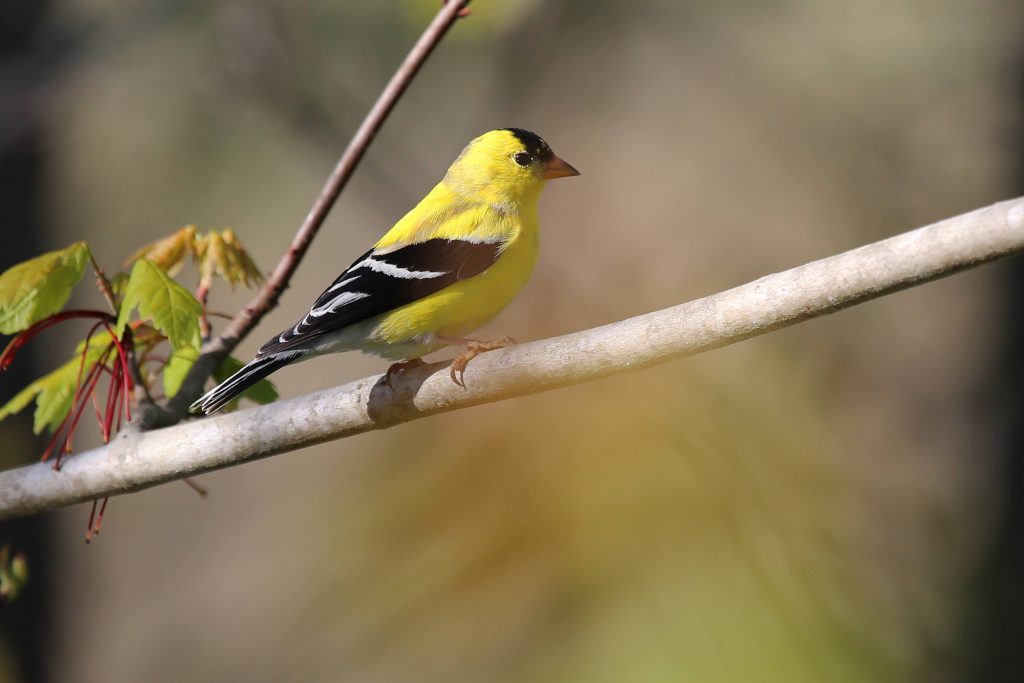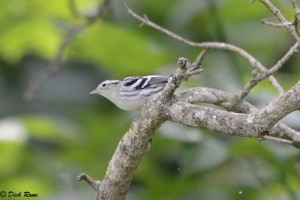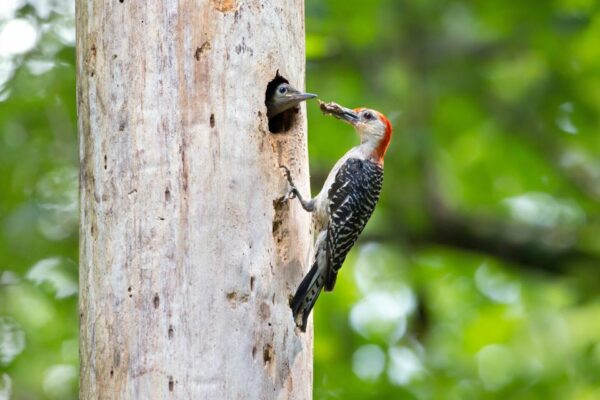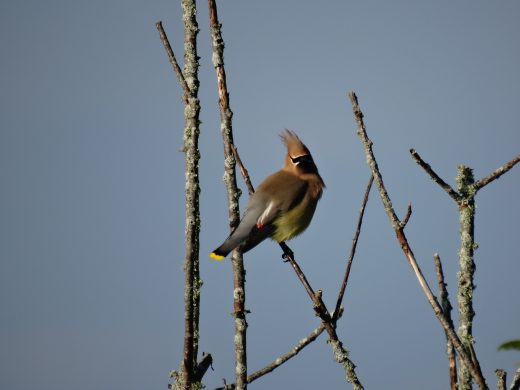By Ashley Peele

American Goldfinch (CO Rob Bielawski)
Bringing an end to data collection for the second VA Breeding Bird Atlas project.
The start of this year’s Fall migration season marks the final phase of our five-year VABBA2 journey. Our summer residents are beginning to move south, as northern breeders start passing through the Commonwealth. In eastern Virginia, early waves of shorebirds are moving down the coastline, while the earliest fall warblers are beginning to travel down the western mountains. Atlas volunteers should remember refer to the Breeding Timeline Charts to ascertain what species have entered the Fall transition zone (when northern breeders begin mixing with our local summer residents). Here are a few questions to keep in mind during your late summer birding…
- Can I be sure this juvenile bird was hatched in my block? This question is much more difficult to answer at this time of year. Many juveniles are dispersing out and away from their natal areas, which means that non-locals may be appearing in your Atlas blocks. One way to gauge a local fledgling is to look at tail length. Recently fledged young tend to have shorter tails than juveniles fledged earlier in the season. In general, its best to err on the side of caution at this time of year. If you’re not sure, get a second opinion from your regional coordinator or birder friends.

Black and White Warbler (Dick Rowe)
-
- Example 1: A fuzzy juvenile Cedar Waxwing begging for food in your pine trees is still a solid FL code in August.
- Example 2: The juvenile Black and White Warbler foraging independently on the edge of the woods is NOT a reliable FL code. In fact, this bird should get no code at all.
-
- Is it possible this bird is migrating? If yes, then do not code any behavior, unless it falls into the breeding confirmation category. For resident species, a few may still be in active breeding mode. American Goldfinch are notably late breeders that may still be on eggs, have nestlings, or fledglings. However, most species should not be coded as H or S any longer. If unsure about who may already be on the move, check out this list of VA- breeding species that may already be leaving their summer breeding grounds:
- Eagles, Hawks, Falcons: Bald Eagle, Osprey, Black and Turkey vulture, Sharp-shinned Hawk, Broad-winged Hawk, Northern Harrier, American Kestrel
- Waterfowl: Mute Swan, Wood Duck, Mallard, Blue-winged Teal, Pied-billed Grebe, Double-crested Cormorant
- Wading birds: Bitterns, herons, egrets, and ibis
- Marsh and Shorebirds: Clapper, King, and Virginia Rail, Sora, Black-necked Stilt, Piping Plover, Spotted Sandpiper, Willet
- Gulls and Terns: all tern species
- Nightjars: Common Nighthawk, Chuck-Will’s-Widow, Eastern Whip-poor-will
- Songbirds: Eastern Wood-Pewee, Acadian Flycatcher, Willow Flycatcher, Great-crested Flycatcher, Eastern Kingbird, Loggerhead Shrike, all Vireo species, Brown Creeper, Blue-gray Gnatcatcher, Veery, Hermit Thrush, Cedar Waxwing, ALL warbler species, Scarlet and Summer Tanagers, grosbeaks, blackbirds, grackles, Brown-headed Cowbird, and both oriole species.
- All swallows, martins, and swifts
- Ruby-throated Hummingbird
- What confirmed codes are still useful? There are several codes that are safe to use, even this late in the breeding season. These include FY (feeding young), NE (nest with eggs), and NY (nest with young). Please continue to report such behaviors to the Atlas, as this provides important updates to our knowledge of breeding phenology in VA.

Red-bellied Woodpecker Feeding Young (Bob Schamerhorn)
- Should breeding chart dates override my observations of confirmed breeding behaviors? No! These charts are meant to illustrate the available information on timing of breeding and migration for species breeding in Virginia. However, your concrete observations take precedence over these guidelines. We are always looking to refine these charts for each region of Virginia and your observations can help us do this. Just remember to follow the precautions described above.
- Do I have any breeding codes on my checklist? If the answer is no, then submit your checklist to good old-fashioned eBird (ebird.org), instead of the Atlas eBird portal. This prevents us from having to weed those out of the 22,000 or so complete checklists from this year. Remember the old rule: if you’re not Atlasing AND have no breeding codes, plug the checklist into eBird.org, instead of ebird.org/atlasva.

Cedar Waxwing (Ashley Peele)
Late summer birding can still produce breeding evidence for late-breeding species (Golden-crowned Kinglet, Cedar Waxwing, American Goldfinch) or resident species that breed into early Fall (Carolina Wren, Mourning Dove, and Northern Cardinal). This is especially true in the mountain/valley regions. However, remember to keep the possibility of migrants and post-breeding dispersal (pesky roaming juveniles) in mind!
Thanks to all the folks who are pushing to squeeze the last bit of useful data out of this final field season.
For those who have some data lingering in notebooks or on smartphones, we ask that you submit all data by September 15th! This is especially important in our final field season, but there won’t be a long off-season to spend playing catch up on data entry. Instead, we’ll be launching into the next phase of the Atlas project, an intensive cleanup and review, beginning later this year. So don’t sit on your data! Get us those records to ensure their use in the final VABBA2 dataset!


